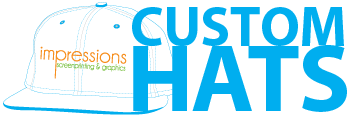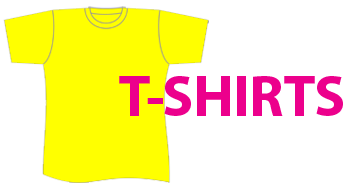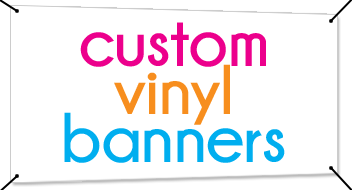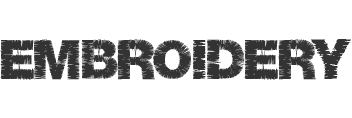Understanding the Screen Printing Process
Understanding the screen printing process will help our customers in choosing artwork, quantity and a better understanding of pricing. At Impressions we use only the finest in screen printing equipment and substrates for your needs. Here you will find information that describes the process and requirements of our industry.
Screen printing is a stencil method of print making in which a design is burned on to a screen of polyester or other fine mesh leaving blank areas coated with an impermeable substance. Ink is forced into the mesh openings by the squeegee blade and onto the printing surface during the squeegee stroke.
Screen Printing Pricing is based on the number of items being printed with the same image and the number of colors in your design – more colors means more screens are needed and so it is more expensive. After the number of colors needed is determined, then the price for printing is based on the quantity of prints needed. We have price breaks at quantities of 25, 50, 75, 100, etc.
Our minimum quantity for Screen Printing is 15 pieces (excluding team uniforms and apparel.) Making screens can be labor intensive and expensive and just isn’t cost-effective at lower quantities. If you need less than 15 pieces, then consider Digital Printing where there is no minimum.
If you’re on a budget and can be flexible with your design, our designer can help you reduce the number of colors needed. You may also want to look at increasing your total number of prints. If you’re close to one of the quantity price breaks, then adding more shirts can significantly lower the cost per piece and may save you money overall.
If you want a more unique look, then consider Specialty Inks/Treatments like Glow-in-the-Dark, Glitter, Metallic, etc. They can greatly enhance your design and add a 3rd dimension to your custom screen printed garments.
Artwork
Art begins with your imagination, either a drawing on paper or computer generated clip art. In any case the end result of the art will be computerized and separated by colors onto a clear film positive. For each color in your design we will need a film positive. For each film positive, we will need a screen. In short, the less colors in your design, the less your printing cost will be. The artwork below consists of 3 basic colors:
COMPOSITE SCREEN 1 SCREEN 2 SCREEN 3
For more information regarding artwork please contact us at 704–251–1112 or email our designer at tkbdesigns@gmail.com
Screens
Screens are a wooden or metal frame with polyester fabric stretched onto them. The polyester fabric is a lot like the screen on your screen door, It has anywhere from 25 threads per inch, to 355 threads per inch (mesh count). The mesh count we will use is determined by the type of design we will be printing. The finer the detail in the design, The higher the screen mesh count will be. We take a light sensitive emulsion (in a dark room) and apply a even coat to the screen mesh. We’ll let that dry for about 6 hours. After the light sensitive emulsion has dried, We will take the film positive and secure it to the back of the screen. Then, we will place the screen on a device that emits light, called an exposure unit, and expose the screen with light for a short period of time.
The dark areas (the image) on the film positive will prevent light from passing through and exposing the screen. The light will pass through clear areas of the film positive (where there is no design) and harden the emulsion. Next, we take the screen off the exposure unit and wash it with water. The water will not wash out the hardened emulsion. The water will wash out the soft areas that the light
did not expose. We are left with a screen that has an image in it. The ink will pass through the open areas of the mesh.
Set Up & Printing
This is where set up fees are incurred. We charge $20 per color, per side for set up. This is one of the most asked questions regarding screen printing. Will the set up fee be a one time only charge? No it will not. We will save screens up to 60 days from your last print run, then the screens will need to be cleaned. So if you place another order within the 60 day time frame you will not be charged another set up fee. After the expired time the same set up fee will be charged. As explained below, every time a new job comes in we have to set it up on our press. We do offer a discount on set up fees for non-profit organizations, and churches with a max of $30 total set up fee.
After making and exposing our screens, We need to prep the printing press for printing. We do this by setting each screen (color) into the press heads. Our manual press has 8 print heads, able to print up to 8 colors on one design. We will set them up by color, light colors first in sequence to the darkest color, usually black last. We need to align each print color to the other to ensure correct registration throughout the printing process. We then add ink colors to the individual screens. T-shirts are loaded onto a pallet that is registered with the screens. Squeegees are used to move across the screen, pushing the ink through and onto the T-shirt, one screen (color) at a time.
Drying
After the shirt is printed we place it on the dryers moving belt. The temperature inside the dryer is about 380 degrees. The shirt will only stay inside of the drying chamber for about 37 seconds. Enough to heat the shirt and ink to about 335 degrees which bonds the ink to the garment. Screen Printing ink consist of four major components. Pigment, (for the color). Oil (for the base). PVC’s and Plasticizers. When heated to 330 degrees, The oil evaporates and the plasticizers turn the PVC into plastic. Yes, that print on your shirt is a thin coat of plastic bonded to the fabric of your shirt.





